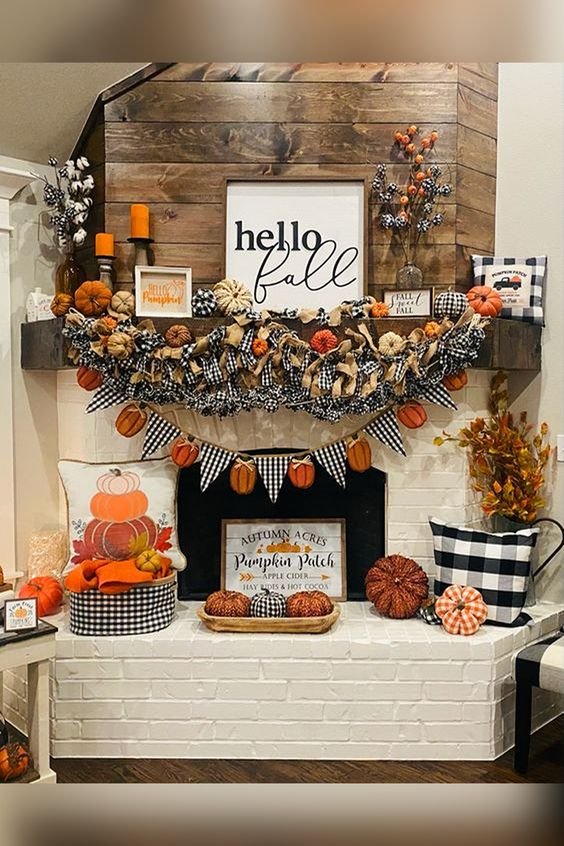5 Essential Fireplace Efficiency Tips for a Cozy Home
RH Business Marketing Solutions
Picture this, a crackling fire, dancing flames, and the comforting warmth that envelops your home. Fireplaces have a unique charm, offering both physical and emotional warmth. However, did you know you could make your fireplace even more efficient, cost-effective, and eco-friendly?
In this comprehensive guide, we will explore the world of fireplace efficiency, sharing practical tips and insights to enhance your fireplace experience.
What Makes a Fireplace Efficient?
Before sharing efficiency tips, it's essential to understand the different parts of chimney and fireplace. A fireplace's efficiency is all about finding the right balance between heat production and heat loss.
Your fireplace is more than just a source of warmth; it's a system with various elements working together. To maximize efficiency, consider the fireplace as a whole. Here are its key components:
● Firebox: This is where the magic happens. The firebox is the heart of your fireplace, where the flames dance and generate heat. Choosing the right-sized firebox for your room is key to maximizing heat production and efficiency.
● Chimney: Think of the chimney as your fireplace's lungs. It's responsible for safely venting smoke and combustion byproducts out of your home. A well-designed chimney is essential to prevent heat loss and boost overall efficiency.
● Chimney Liner: A chimney liner protects your home by keeping heat away from flammable materials. It also improves airflow and prevents the nasty buildup of creosote, which can hinder efficiency and pose fire risks.
● Grate: Picture a sturdy metal platform inside your firebox, lifting logs off the floor. That's your firewood grate. It's like a personal trainer for your fire, promoting air circulation with the fuel, leading to better combustion and more heat.
● Gas Line: For gas fireplaces, the gas line is the lifeline. It's hidden behind the airtight glass doors, supplying fuel to the burner, creating those cozy flames while keeping your home warm.
Efficiency boils down to the delicate balance between heat production and retention. To optimize it, choose a fireplace that fits your room's size and maintain your chimney wisely.
Moreover, a well-designed chimney curbs heat loss by creating a robust draft to whisk away combustion byproducts. Using a firewood grate enhances combustion and heat output, while a chimney liner acts as a heat shield, thwarting heat transfer and creosote buildup.
Gas fireplaces, notably more efficient than wood-burning ones, reduce heat loss and maintenance hassles.
Factors Affecting Efficiency
A fireplace's efficiency is deeply intertwined with its type, condition, and maintenance. Let's look into these factors and learn how they impact the overall performance of your fireplace.
Understanding your fireplace type is the first step in optimizing efficiency. For instance, masonry heaters excel in efficiency as they burn wood at high temperatures, providing even heat distribution.
In contrast, wood stoves are more energy-efficient than fireplaces, boasting ratings of up to 80%, whereas traditional wood-burning fireplaces typically score only 25% in efficiency.
Furthermore, cast-iron stoves are surrounded by dense materials that aid heat retention. Gas fireplaces generally lag behind wood stoves and fireplaces in terms of efficiency.
Just like any cherished possession, your fireplace deserves proper care. Poorly maintained fireplaces may suffer reduced efficiency, often attributed to chimney blockages and related issues.
Therefore, regular cleaning and maintenance are vital steps to enhance the efficiency of fireplaces and wood stoves.
Practical Tips for Maximizing Fireplace Efficiency
1. Choose the Right Wood
Selecting the right wood is essential for a highly efficient fire. Varieties of wood have varying burn durations; hardwoods like oak, walnut, and cherry generally burn longer than softwoods like pine and fir. Hardwoods produce more heat than softwoods.
Additionally, the moisture content of the wood is critical. Wood with excess moisture content can lead to shorter burns and potential harm to the fireplace, stove, or insert.
In contrast, well-seasoned wood with lower moisture content burns cleaner and hotter. You can also learn about the proper arrangement of logs for optimal burning.
To start, place the largest ceramic logs at the bottom to serve as the foundation for your fire. The arrangement of logs depends on their size and your gas fireplace's design.
Maintain a 2-inch (about 5 cm) gap between each gas fireplace log to ensure unobstructed gas flow. If you observe any blockage in the gas flow, rearrange the logs with smaller ones atop the larger foundation logs.
2. Maintain Proper Airflow
Proper airflow is vital for efficient combustion. The damper, a crucial component, regulates airflow. Ensure it's open when burning and closed when not in use to prevent heat loss.
Regular chimney flue maintenance is also essential, as a clean flue ensures efficient airflow. Moreover, installing a chimney cap prevents rain, snow, and animals from entering, maintaining airflow efficiency.
3. Use a Fireplace Insert
Fireplace inserts, crafted from steel or cast iron, substantially enhance fireplace efficiency. They excel in heat retention, radiating warmth more effectively than traditional fireplaces. These inserts optimize efficiency by burning wood thoroughly, resulting in cost savings.
They also ensure cleaner combustion with reduced emissions. Safety features like sealed doors and insulated glass enhance safety and indoor air quality.
Available in various styles and fuels, fireplace inserts are versatile. They extend your fireplace's lifespan and offer environmental benefits by reducing wood usage.
Professional installation ensures compatibility and the preservation of your fireplace's charm, providing efficient, eco-friendly warmth.
4. Clean Your Firepalce Regularly
Regular maintenance is key to efficient, safe burning. Prevent soot and creosote buildup by having your chimney swept annually. A clean chimney allows for better airflow and reduces the risk of chimney fires. Remember to keep the hearth free of ash and the firebox clean for optimal performance.
5. Check for Drafts
Ensuring your fireplace area is draft-free is crucial for optimizing efficiency. Start by carefully inspecting the hearth, doors, and the surrounding area for any gaps or cracks that might allow cold air in and warm air out.
Then, seal these openings with appropriate materials, such as high-temperature silicone caulk or weatherstripping. Pay close attention to the fireplace doors; they should be a tight fit to prevent drafts.
By eliminating drafts, you maintain a warm and cozy indoor environment, prevent heat loss, and make the most of your fireplace's heating capabilities, ensuring both comfort and cost savings during the colder months.
The Cost of Inefficiency
Operating an inefficient fireplace can lead to several unwelcome consequences. Here are some you have to keep in mind:
● Elevated Energy Expenses: Ineffective fireplaces frequently result in elevated home heating expenses, raising overall energy consumption by up to 30%, or nearly $200 per year. When a fireplace lacks efficiency, more heat escapes, causing your heating system to work harder and consume more energy.
● Potential Home Fires: Accumulated creosote and negligent maintenance pose potential dangers. Creosote buildup within the chimney can ignite, leading to hazardous chimney fires. Regular maintenance is crucial to mitigate this risk.
● Diminished Lifespan: Inefficient usage can accelerate wear and tear on your fireplace components. Furthermore, this can significantly shorten the lifespan of your fireplace, necessitating costly repairs or replacement. Maintaining efficiency is key to prolonging its life.
Conclusion
An efficient fireplace warms your home and heart with cost savings and peace of mind. By following these fireplace efficiency tips, homeowners can enjoy the cozy ambiance of their fireplace while reducing energy costs and ensuring safety.
Regular maintenance and inspections are essential for a safe, warm, and efficient home. By prioritizing fireplace efficiency, you contribute to a more environmentally friendly living space, reducing your carbon footprint and promoting eco-friendliness.






















